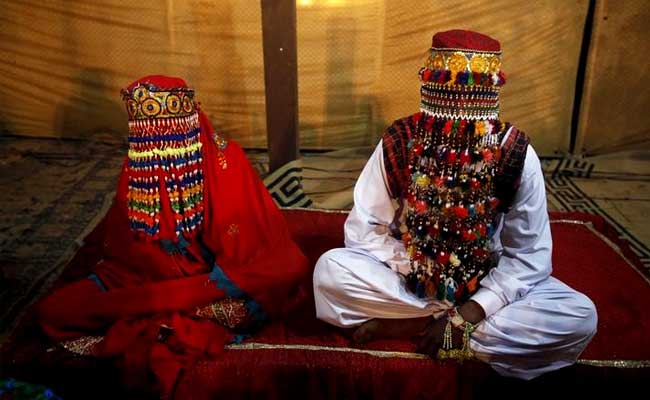This article is written by Raslin Saluja from KIIT School of Law, Bhubaneswar. This article analyses the issues pertaining to child marriage and the Muslim personal law in reference to the recent case of Jaspreet Kaur and Anr v. State of Punjab and others.
Table of Contents
Introduction
The evil of child marriage affects both the male and female, but females seem to face more repercussions. It not only affects their general well-being, and takes away their childhood but also adds the burdens and responsibilities of life onto them from a young age. It essentially violates their rights and puts them in circumstances of high risk, violence, and abuse. The concept is driven by the interplay of various economic and social forces practiced in communities as a part of social norms and attitudes that reflect the low value according to the human rights of girls.
According to the statistics given by UNICEF, South Asia accounts for the highest rates of child marriage in the world. Almost half (45%) of all women aged 20-24 years reported being married before the age of 18. Almost one in five girls (17%) are married before the age of 15. Data estimates that at least 1.5 million girls under the age of 18 get married each year in India alone, making it home to the largest number of child brides in the world, and accounting for a third of the global total. Though it also shows a considerable decline from 2006 to 2016, however, the situation still seems alarming.
What child marriage means?
Generally, child marriage can be understood as a marriage that is solemnized against the stipulated legal age as specified in various laws governing the contract of marriage. In the international sphere, covenants such as The Convention on Elimination of all forms of Discrimination Against Women (CEDAW) and Convention on the Rights of Children (CRC) recognize the need to protect the rights of children for their harmonious development and enumerate the guiding provisions for the states parties. As for India, The Child Marriage (Restraint) Act, 1929 and the Prohibition of Child Marriage Act, 2006 enacted with the aim to curb the evil of child marriage provide for the minimum age for the purposes of marriage, where a male below 21 years of age and a female below 18 years of age is to be considered a child.
In India, however, child marriage can be solemnized as per the respective personal laws, and as such for the purpose of ‘solemnization’ of child marriage, there is no single law.
Issues of child marriage
Early marriage and child marriage can have numerous impacts on the health of the individual. It is a deeply rooted social norm and showcases widespread gender inequality and discrimination. Those children who become a victim to it are more likely to lack the required basic skills, knowledge, and job prospects needed to uplift their poverty-stricken living conditions, and contribute to their country’s social and economic growth. Girls who are married earlier are more likely to be uneducated and without any qualifications to be able to earn money and contribute to the community. This is also the result of assigning lower value to girls, as compared to boys, girls are perceived to have no alternative role other than to get married. There is a high possibility she may become a victim of domestic abuse and bear children while still being a child herself. This will in turn add to the economic burden of a household as she could have more children over her lifetime. There are even high chances of poor health conditions and complications in pregnancy as well as issues of premature babies. As parents, they would lack decision-making powers and parenting skills.
Prohibition of Child Marriage Act, 2006
Attempts have been made for more than 140 years by the Indian government and greater society to obliterate the practice of child marriage through various enactments and penal provisions. Today the act is illegal in India, however, the roots of child marriage stem way back to pre-colonial times as the concept also found a mention in early religious texts. Girls have often been perceived as economic burdens since bride prices and dowries were a part of the larger motivation for furthering child marriages. These decisions were mainly surrounded by the family’s wish to reduce the marriage costs. Further early marriages were also an attempt of policing and maintaining a girl’s purity and chastity which even today is a hot topic for debate.
In 1927, Rai Sahib Harbilas Sarda introduced the Child Marriage Restraint Bill, which set the minimum age of marriage at 14 for girls and 18 for boys, and by 2006 we had the Prohibition of Child Marriage Act. This Act essentially penalizes the solemnizes of child marriage and ceremony under Section 10, with rigorous imprisonment that may extend to two years and fine up to rupees one lac. It also makes a child marriage voidable by the married party up to two years after such participant has attained maturity under Section 3 and allows the court to intervene. The act aims to punish those involved in the performance or promotion of child marriage under Section 11 and allows the contracting parties i.e spouses to nullify the marriage by way of decree under the circumstance as mentioned in Section 12.
It is gender-neutral and is generally applicable to all citizens of India. It is progressive legislation with a uniform application specifically meant to regulate child marriage. The Act recognizes the children born out of the child marriage and gives them legitimacy along with custody and maintenance directions under Sections 5 and 6. Despite such provisions, the law has somewhere failed to be able to completely abolish the practice of this evil. No substantial difference has been brought notwithstanding the efforts of various NGOs and public interest litigation filed. The practice still takes place in various rural areas of India.
Child marriage in Muslim personal law
The status of child marriage according to the prevailing standards of attaining a majority in Muslim personal law varies from the prescribed age given in the general laws. The two requirements under the capacity to marriage in Muslim personal law are sound mind and majority. However, a Muslim attains majority (puberty) at the age of 15. It goes back as far as 1928 wherein in the case of Nawab Sadiq Ali Khan v. Jaya Kishori, the privy council stated the age of majority of a girl is 9 years, while under the Hedaya law, the earliest period for a boy is 12 years and for a girl is 9 years.
However, the consent of a guardian is required to solemnize a child marriage which is capable of later being repudiated by such minor upon hitting puberty. Though even for repudiation, the consent of the guardian is required provided the marriage is not consummated. Further, the marriage of those Muslims who have attained puberty is valid.
The option of puberty is of the essence for repudiation of marriage. It is a right given to both the parties to cancel the marriage that was solemnized while the contracting parties were minor with the consent of the guardian. There is also an option for divorce under Section 2 (vii) of the Dissolution of Muslim Marriage Act, 1939 wherein the female spouse of a valid minor marriage without consummation can repudiate the marriage either after attaining puberty or before attaining 18 years of age.
Her right of divorce in this connection is lost the moment when:
- She fails to repudiate the said marriage before attaining 18 years, it shows her willingness to continue with the said marriage;
- She establishes sexual relationships with the male spouse, which shows her willingness to continue with the said marriage, and sexual relationship and procreation are the legal incidences of marriage.
However, the Rajasthan High Court in Shabnam v. Mohd Shabir, held that the girl would not lose her right to divorce if marriage is consummated before she attains the age of 15 years.
Current status
Recently, a case Jaspreet Kaur and Anr v. State of Punjab and others came up before the Punjab & Haryana High Court which again set in motion the legal conundrum between the application of personal law or the general law with respect to child marriage.
Facts
A girl named Jaspreet Kaur has married a Muslim man named Azim Khan. It was stated that the girl is above the age of 18 years whereas the male even though minor could marry under the application of Muslim personal law and have done so against the wishes of the respondents.
Order
The petition was disposed of by the High Court stating that life and liberty under Article 21 of the Indian Constitution, should be taken care of at any cost and that even though the male is of legal age to marry under Muslim personal law, Prohibition of Child Marriage Act,2006 will be implemented as it is uniform in its application regardless the religion of the parties involved. Therefore, any offense committed under the Act shall be punishable.
The Court went on to refer to the pronouncement of the Supreme Court in the case of Hardev Singh v. Harpreet Kaur wherein it stated that if a girl is above marriageable age according to the Act, the marriage then will not be an offense punishable under the Act of 2006. Consequently, life and liberty have to be duly protected following the law.
However, if in the present case, it is established through evidence that the petitioner’s age is below 18 years then the direction under this order shall not prohibit the proceedings of the Act as cognizable under Section 15. Thus, a discrepancy between personal laws and Indian law has always been a part of the comprehensive discussion and the same has time and again been highlighted through various decisions. Even as earlier the decisions are given by the same High Court in the case of Shoukta Hussain and others v. State of Punjab, again brought the focus on the unsettled position of law as to whether the 2006 Act overrides the personal laws applicable to Muslims.
The legal conundrum
The Act only mentions the Hindu Marriage Act but is silent on other personal laws as well as the aspects like that of sexual relationship or violence and abuse and related needs of care and protection which are covered by other laws. Besides, the inconsistency in giving a uniform decision and the accepted form of implementation continues to build further ambiguity. In various instances, though it has been pointed out that personal laws are subject to public order, health, and morality under the Constitution, and in case of conflict, the special act is bound to take precedence over personal laws. Even in a 2017 Apex Court judgment, the now-retired Justice Deepak Gupta acknowledged the Act as secular and prevailing over provisions of Both the Hindu Marriage Act and the Muslim Marriages and Divorce Act. Still, there is no authoritative decision in the matter.
Conclusion
Despite various attempts, social reforms in the subject seem to have never happened. While not targeting personal laws as such, the country has to be more serious in implementing the uniform civil code with the joint efforts of the Parliament and the citizens of India. The laws need to be in tune with modern times and the courts ought to interpret them with a progressive mindset. What was considered normal in the previous times is probably considered a crime today with changing times? Thus, the laws, as well as the lawmakers and the bodies expected to uphold them, must keep up, which is the need of the hour.
References
- https://www.unicef.org/india/what-we-do/end-child-marriage
- https://www.indiatoday.in/education-today/gk-current-affairs/story/child-marriage-india-1293581-2018-07-23
- https://theprint.in/judiciary/muslim-law-allows-minor-girls-to-marry-anyone-on-attaining-puberty-says-punjab-haryana-hc/602868/
LawSikho has created a telegram group for exchanging legal knowledge, referrals, and various opportunities. You can click on this link and join:
 Serato DJ Crack 2025Serato DJ PRO Crack
Serato DJ Crack 2025Serato DJ PRO Crack









 Allow notifications
Allow notifications



